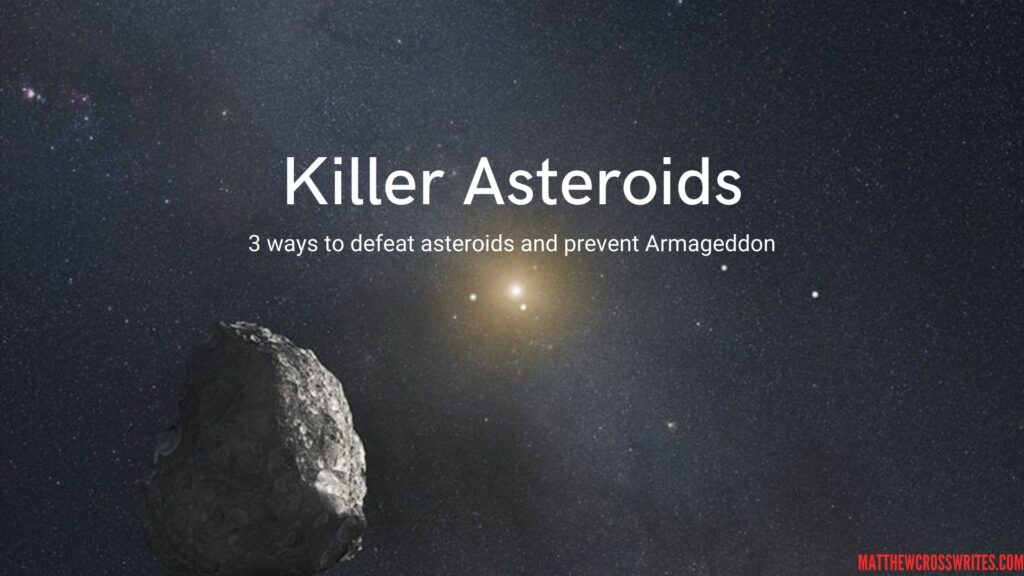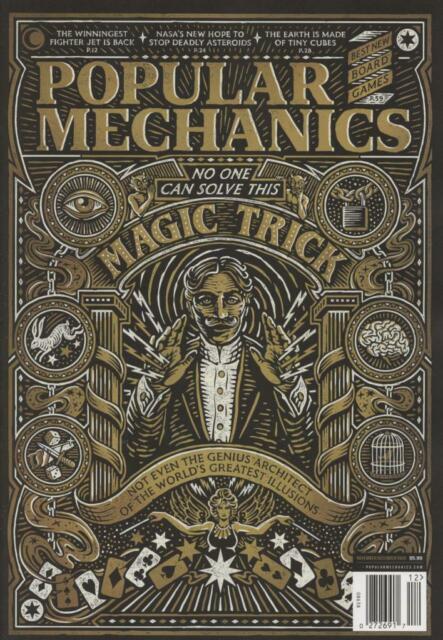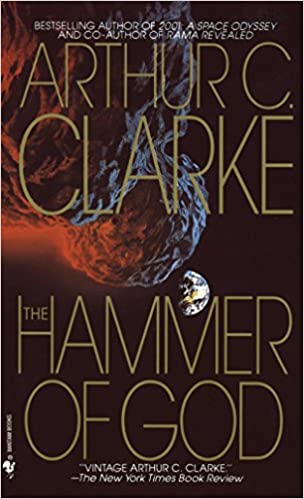If astronomers found a large asteroid headed towards Earth, could we defeat it before it smacked into our atmosphere, raining down fire and destruction?


Astronomers, physicists and engineers have been watching for “planet-killing” asteroids and other space bodies and making plans for decades. I just finished reading the Space column in my November/December issue of Popular Mechanics by Jennifer Leman, titled “Could a Cosmic Lasso Divert Extinction-Level Asteroids?”
It’s a good read and I recommend you check it out. In the meantime, I was thinking of the 3 basic ways to defeat an asteroid, which can be found in discussions with scientists and also in Sci Fi film and literature: pound it, push it, or pull it.
1) Pound it
That’s right, pound the asteroid with missiles, nukes, bombs, whatever! Throw everything we have at it. Blow it up! So simple and easy, a 5-year-old could figure it out.
That is possible, but a “blown up” giant asteroid can be as dangerous, sometimes more dangerous, than an intact one. Consider a Mack truck rushing towards you at 100 miles per hour. If it hits you, you’re a pancake. But if I disassemble that Mack truck into its thousands of metal and plastic pieces, put them on a cart, and shove them at you at 100 miles per hour, the pieces are just as dangerous as the fully assembled Mack truck.
The point is that “blowing up” an asteroid does not change the overall mass of ice and rock. Unless the explosion threw most of that mass off its course with Earth, it would still be a devastating blow for life on Earth whether the asteroid was one solid piece, hundreds of one-ton pieces, or even a massive cloud of dust. In fact, sometimes pieces are worse.
Here’s what Jennifer Leman says on this topic in her Popular Mechanics piece:
“It’s risky to Hulk-smash an Earth-bound, extinction-level asteroid, though. ‘In general, when we move an asteroid, we want to keep it in one piece,’ says planetary astronomer . . . Andrew Rivkin, Ph.D., of Johns Hopkins Applied Physics Laboratory. The rock could break apart and create a wave of several smaller ‘city-killing’ asteroids instead.’ (This risk also applies to an Armageddon-style nuclear solution, we’re told–there are no plans to test a space nuke at this time.)”
Dust is also a problem.
According to killerasteroids.org, “to lead to a global catastrophe, an asteroid or comet only has to be big enough to launch large amounts of dust into the atmosphere. That leads to the abrupt change in climate that wipes out species.”
If an intact asteroid enters the atmosphere as one giant mass, hits the ground, and releases a giant cloud of dust, it’s bad. But if the remains of a blown-up asteroid hit the atmosphere as a giant cloud of dust, it’s still very bad.
2) Push it
In Arthur C. Clarke’s 1993 novel The Hammer of God, scientists on Earth in the year 2109 decide to use the “push it” method to divert an asteroid on a collision course with Earth. They send the spaceship Goliath to the asteroid with the “ATLAS propulsion module,” which is basically a super-powered rocket that uses nuclear fusion-powered thrusters.

Clarke explores several problems with this method, including the fact that asteroids are not designed by engineers to be pushed. Asteroids are random collections of metals, rocks, water ice and other ices. They can have soft spots.
After weeks of pushing the asteroid, the Goliath sinks a few meters into the asteroid and the ship is damaged. The Goliath ends up losing its fuel and is stranded on the asteroid. And the asteroid is still headed towards Earth!
On Earth, the scientists come up with a back-up plan to blow up the asteroid with nuclear weapons. That’s the “pound it” approach. That strategy does not turn out as expected, either. But I won’t spoil this Sci Fi classic for you. Check it out!
3) Pull it
I’m not a scientist, so to my simple mind this seems like a variation of “push it.” You need a rocket or some other method of propulsion. The only real difference seems to be how you attach the rocket to the asteroid. But is there an even better way?
According to Leman’s Popular Mechanics article, Flaviane Venditti at the Arecibo Observatory in Puerto Rico and other scientists are studying a “lasso” method that could pull a “killer asteroid” off course.
By tying another smaller asteroid to the “killer asteroid” with a long tether, you change the center of mass. Given time, that will change the asteroid’s trajectory. Even an asteroid only one-thousandth the size of the “killer asteroid” can divert the larger asteroid by millions of miles if the tether is long enough and the angle of the tether is right. This could require a strong tether that stretches for nearly 2,000 miles. (That may be a challenge for engineers to build, but so is a fusion rocket.)
Here’s another post where you can learn more about asteroids:


